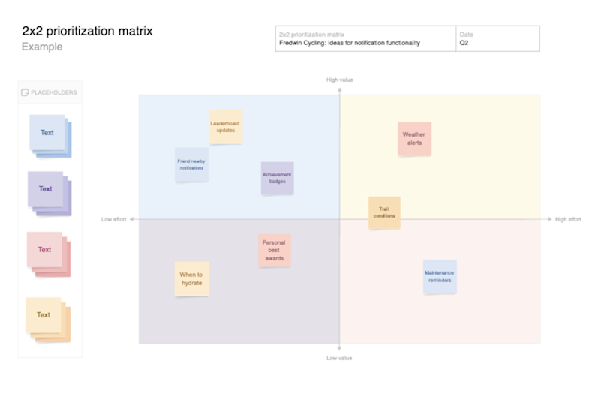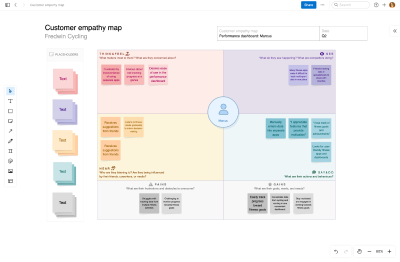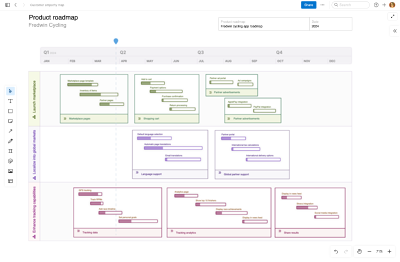How product managers gather and use customer feedback
Learn how to capture what matters — from incoming ideas to intentional conversations
Last updated: June 2025
Learn how to collect, analyze, and act on customer feedback (including insights from ideas, support tickets, interviews, and usability tests). Discover how top product teams use Aha! software to connect customers' needs to strategic product planning. |
Customer feedback is the backbone of good product decisions. It fuels your thinking early on and keeps you grounded as the product evolves. You might learn how people feel about a new feature, challenge assumptions about user behavior, or uncover needs you had not anticipated.
But feedback is not just a path to better outcomes. It is also a way to build trust. Listening shows people you value their perspective. That trust builds stronger relationships — bringing customers back with more insight to share.
Aha! software helps product teams manage the full spectrum of customer feedback.
That said, the real challenge is not collecting feedback, is it? Feedback is everywhere. Product managers are inundated with ideas, requests, complaints, and questions scattered across portals, emails, call notes, and online chats. The hard part is knowing what to pay attention to. What is a passing comment vs. a real problem? Which voices represent broader trends?
This is where structure matters. Without it, valuable insights get buried or overlooked. You need a way to capture what is coming in, make sense of it, and tie everything back to what you are building.
This guide walks through how to do that well, and how tools like Aha! Discovery and Aha! Ideas support every part of the customer feedback process. Keep on reading, or use these links to jump ahead to any section:
Customer feedback in product development
Customer feedback includes anything that reveals what people think, want, or need from your product. It might come through a support ticket, an idea submission, or a quick note during a call. This feedback gives you a window into how users feel and why they behave the way they do.
And inputs show up in all kinds of ways. An ideas portal reveals common requests and patterns over time. 1:1 conversations uncover nuances you cannot get at scale. Product analytics show how people actually interact with your product — pointing to areas that might deserve further exploration.
At Aha! we view feedback and discovery as a connected system. Aha! Ideas helps you capture and analyze feedback, offering you a broad view of what people are asking for. Aha! Discovery helps you dig deeper, plan research studies, and link insights directly to your roadmap. Together, the tools help you move from input to insight to strategic action.
Related:
What should you consider before collecting customer feedback?
Strategic product managers do not gather feedback just to hear what people think — they do it to learn something specific. Clarity of purpose is everything. When you know what you want to understand, it is easier to identify the right audience, choose the best research methods, and recognize meaningful insights when you hear them.
To stay organized, set up a simple system to track:
Who shared input: Use tags like role, industry, or usage level.
Why it matters: Tie each interaction to a clear learning goal.
What was shared: Link insights to related ideas or upcoming work.
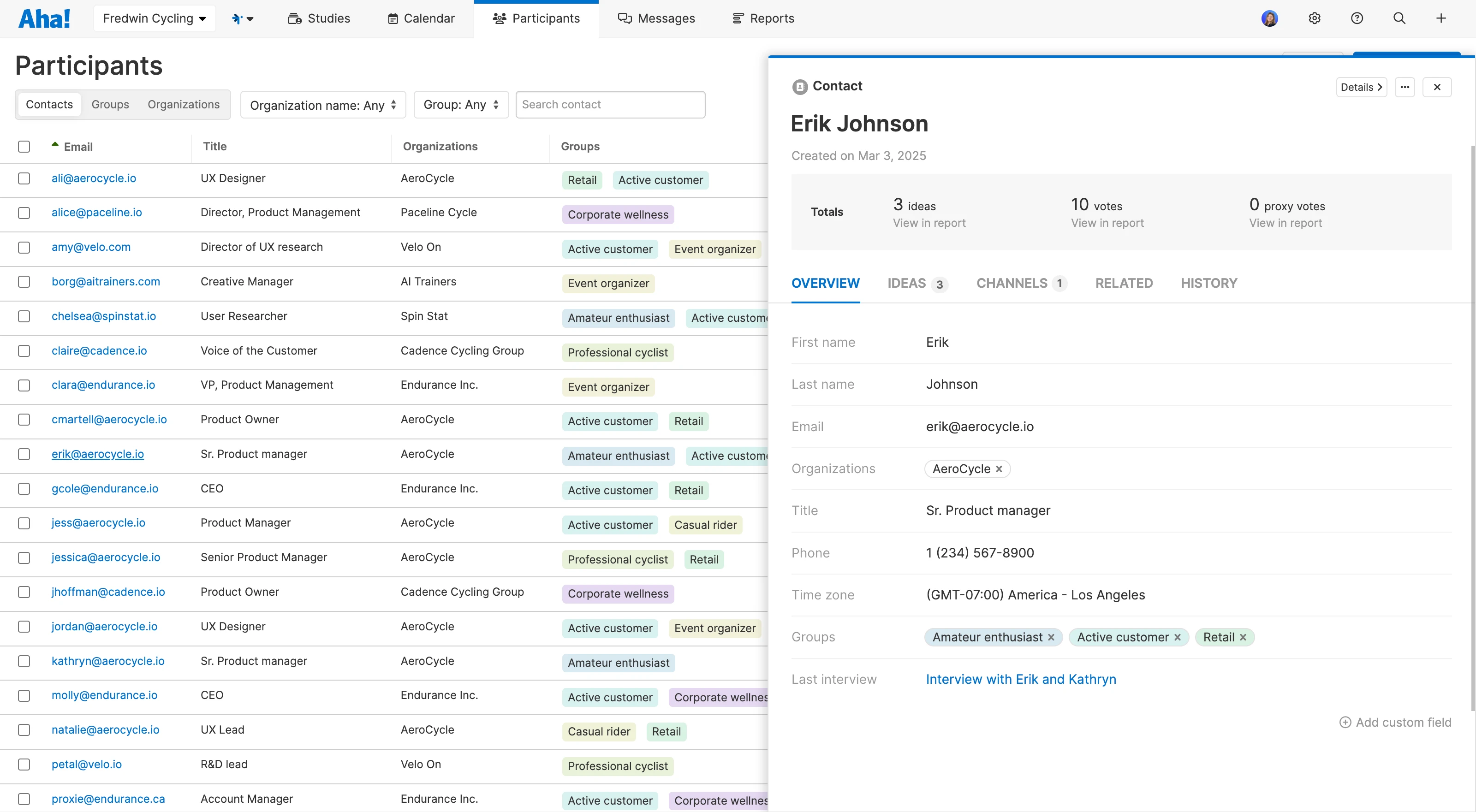
Build your own customer database to manage who to engage with based on their persona or interests.
Choose the feedback method based on what you want to learn. If you need depth, try interviews. A survey might be a better fit if you want quick input from a wider group. We break down these options in the next section.
What are some methods for collecting customer feedback?
You have more ways than ever to gather customer feedback, but that does not make it easier to know where to start. Below are the most common approaches organized into three categories: always-on listening, structured discovery work, and quantitative signals.
Always-on listening
These channels stay open around the clock. Feedback flows in, but it takes effort to spot the themes worth acting on.
Ideas portal | Give customers a place to submit suggestions, requests, and pain points. With Aha! Ideas, you can crowdsource feedback, identify trends, and evaluate what matters most using voting and proxy voting. Use it when: You want a scalable, always-on way to collect and prioritize feedback over time |
Support tickets and sales notes | Customer-facing teams hear about user needs every day. Capturing these insights — and tying them to product requests — brings context to your roadmap planning. Use it when: You want to spot recurring pain points or understand the "why" behind common friction |
Community forums and social media | People do not always reach out directly, but they often share what they think. Online discussions and social media posts can surface issues, ideas, or unexpected use cases. Actively monitoring these channels helps you understand what users are talking about and where friction might be hiding. Use it when: You want to track unfiltered reactions and uncover emerging issues or themes |

Customer ideas and votes can be captured in an Aha! Ideas portal.
Structured discovery work
These methods are deliberate. You define a learning goal, choose your audience, and design the format.
Customer interviews | Explore how people think and feel — not just what they do. Ask open-ended questions to surface unmet needs and clarify context. With Aha! Discovery, you can schedule interviews, capture notes, tag key takeaways, and use AI to summarize insights. You can then group related insights into themes and link them directly to your product roadmap. Use it when: You want rich context behind user behavior or need to explore a complex problem in depth |
Surveys | Reach a large group quickly with a mix of quantitative and qualitative questions. Use it when: You want to validate a hypothesis or gauge sentiment across a broader audience |
Usability testing | Watch how customers interact with your product in real time. These sessions help you catch friction points and task failures that users might not report themselves. Use it when: You need to assess whether a workflow or feature is intuitive and effective |
Focus groups | Small group discussions provide insight into user attitudes and early reactions to new ideas. Use it when: You want to explore early reactions to an idea or compare perspectives across a customer segment |
Customer advisory boards | Regular meetings with strategic customers offer high-level feedback on product direction. Use it when: You want to pressure-test roadmap plans or get input on your long-term strategy from key decision makers |
Quantitative signals and behavioral data
These methods help you understand what users are doing and how they respond to changes. This data often guides where to look deeper with research.
Polls | Lightweight sentiment checks. Polls are typically one-question surveys with pre-defined responses. Use it when: You need a quick pulse on preferences or want to validate a specific idea with minimal friction |
A/B testing | Compare variations of a product element — like a headline or call to action — to see which one performs better. Use it when: You want to optimize content, design, or functionality based on real user behavior |
Analytics | Behavioral data shows how users navigate your product: where they click, what they ignore, and where they drop off. Use it when: You need to identify tricky points or usage gaps that warrant deeper investigation through qualitative methods |
How to turn customer feedback into product direction
Collecting feedback is just the beginning. The real value comes from what you do with it. You must organize what you hear, find the deeper meaning, and decide what is worth acting on — all while staying aligned with your product goals.
In Aha! Discovery, you can group interview notes by topic, product area, or customer need. In Aha! Ideas, you can track patterns across suggestions. Together, these tools help clarify what people are really asking for (even when they do not state it directly!).
But how do you know when a pattern reveals a real opportunity versus a distraction?
This is where strategy sharpens your judgment. Focus on requests that move your goals forward. Weigh trade-offs carefully. In Aha! Ideas, you can score ideas based on votes, potential revenue, and alignment with strategic priorities. In Aha! Discovery, you can analyze interview data and use AI to surface recurring themes. Use both tools together to validate what you are hearing and build confidence in your direction.
For example, suppose a high-volume idea gains traction in your ideas portal. You pause to validate. You check support tickets and run interviews. What customers actually need turns out to be related, but different. You tag the theme, connect it to the original idea, and promote a refined solution that better fits your goals.
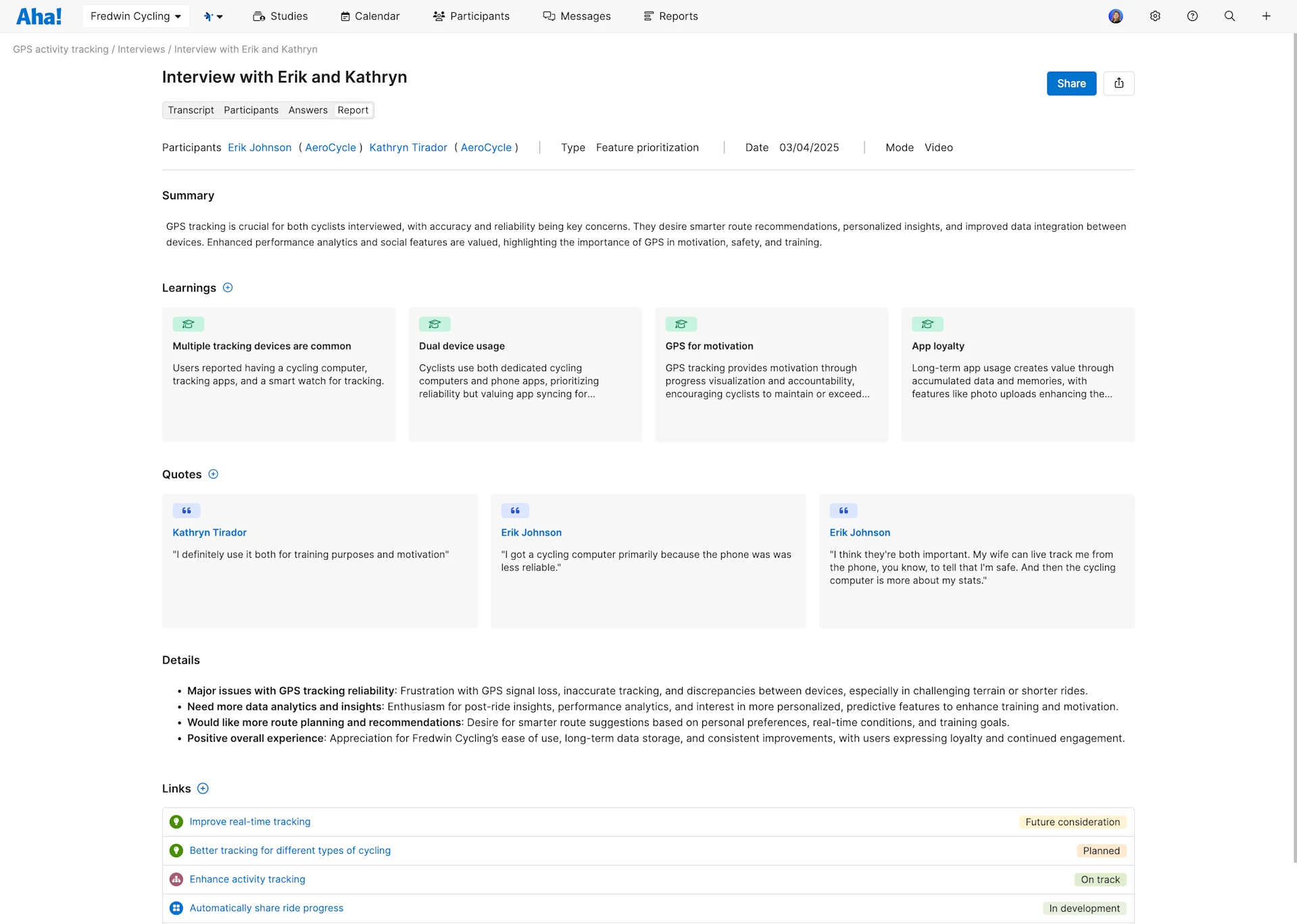
Use the AI assistant in Aha! Discovery to quickly analyze customer interviews, uncover valuable insights, identify key quotes, and more.
Related:
Customer feedback is never one-and-done. Needs shift. Priorities evolve. The best product teams listen deeply and treat feedback as a continuous part of product development. After all, this is a chance to see your product through someone else's eyes — and make things better because of it.
FAQs about how to collect customer feedback
Customer feedback reveals what people think, want, and need — insights you cannot get from usage data alone. Listening helps you understand how your product performs in the real world and where it falls short. When feedback is part of your routine, it becomes easier to make confident decisions and build solutions that truly matter.
It depends on what you need to learn. Use an ideas portal to capture ongoing suggestions. Run interviews to explore a specific problem in depth. Surveys and polls are helpful when you want input from a broader group. See the methods section for more detail on how these approaches work together.
Start by tagging ideas and insights by theme. Look for patterns across channels (the same issue might show up in support tickets and interviews). Then, evaluate which problems align with your goals. Use feedback to guide your roadmap rather than simply responding to requests. Learn more in this section.
Aha! Ideas helps you collect and organize incoming feedback, and Aha! Discovery helps you plan research, interview customers, and analyze what you learn. Together, they give you one system for managing both organic input and structured discovery work.
Not every suggestion deserves a place on your roadmap. Conflicting requests are common — one group might want automation, another wants control. That is when you pause and ask: Is this a segment difference? A usability issue? A distraction from your strategy? Use judgment (and not just volume) to decide what to build.
